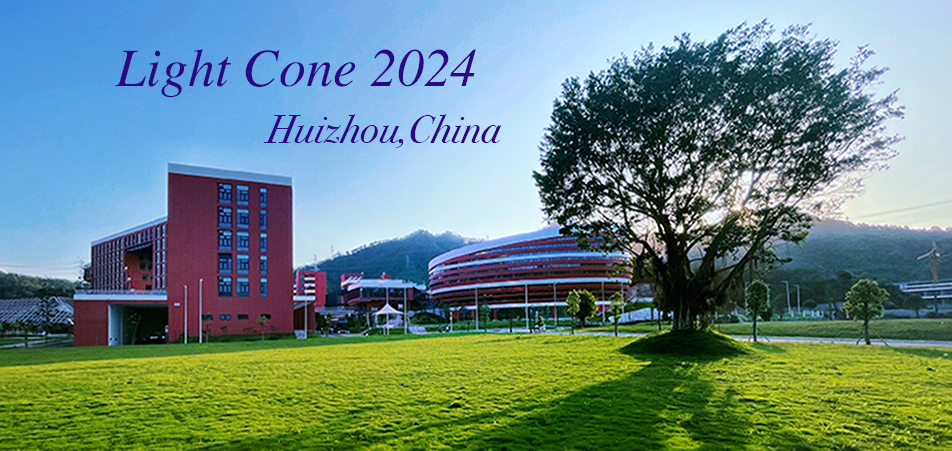Speakers
Description
Nuclear dependence of Single Transverse Spin Asymmetry (STSA) in $p^↑ p$ and $p^↑ A$ collisions is still a standing mystery. Recent results by PHENIX ($A^{-1/3}$) [1] and STAR ($A^0$) [2] collaborations posses strikingly different nuclear scaling which suggest that the dominant underlying mechanism for STSA may vary with the kinematics of the collision. In the forward regime, where the gluon saturation effects become important, and where the collisions are described in the so-called hybrid formalism [3], two contributions to STSA in $p^↑ p$ and $p^↑ A$ collisions have been found [4,5]. In [5], the phase required for STSA comes from the imaginary part of twist-3 fragmentation function (FF) with the polarized projectile described with Transversity parton distribution function and the unpolarized target with real part of Dipole distribution, Pomeron. We have found a new contribution to STSA [Benić, Vivoda in preparation] which comes from the combination of real part of genuine twist-3 FF and the imaginary part of dipole distribution, Odderon. The Odderon mechanism to STSA is known to generate significant nuclear dependance [6] and we expect that this approach could shine a new light at RHIC data [1,2]. Also, this contribution will give us some insight into the real part of the twist-3 FF which has not yet been constrained by global fits [7]. In this talk I will first provide a formula for polarized cross section and then discuss our numerical results for STSA [Benić, Vivoda in preparation].
References:
[1] C. Aidala et. al. (PHENIX Collaboration), Phys. Rev. Lett. 123, 122001 (2019).
[2] J. Adam et. al. (STAR Collaboration), Phys. Rev. D 103, 072005 (2021).
[3] A. Schafer and J. Zhou, Phys. Rev. D 90, 034016 (2014), 1404.5809.
[4] Y. Hatta, B.-W. Xiao, S. Yoshida and F. Yuan, Phys. Rev. D 94, 054013 (2016).
[5] Y. Hatta, B.-W. Xiao, S. Yoshida and F. Yuan, Phys. Rev. D 95, 014008 (2017).
[6] Y. V. Kovchegov and M. D. Sievert, Phys. Rev. D 86, 034028 (2012), [Erratum: Phys.Rev.D 86, 079906 (2012)].
[7] L. Gamberg et al. (Jefferson Lab Angular Momentum (JAM) Collaboration), Phys. Rev. D 106, 034014 (2022).

